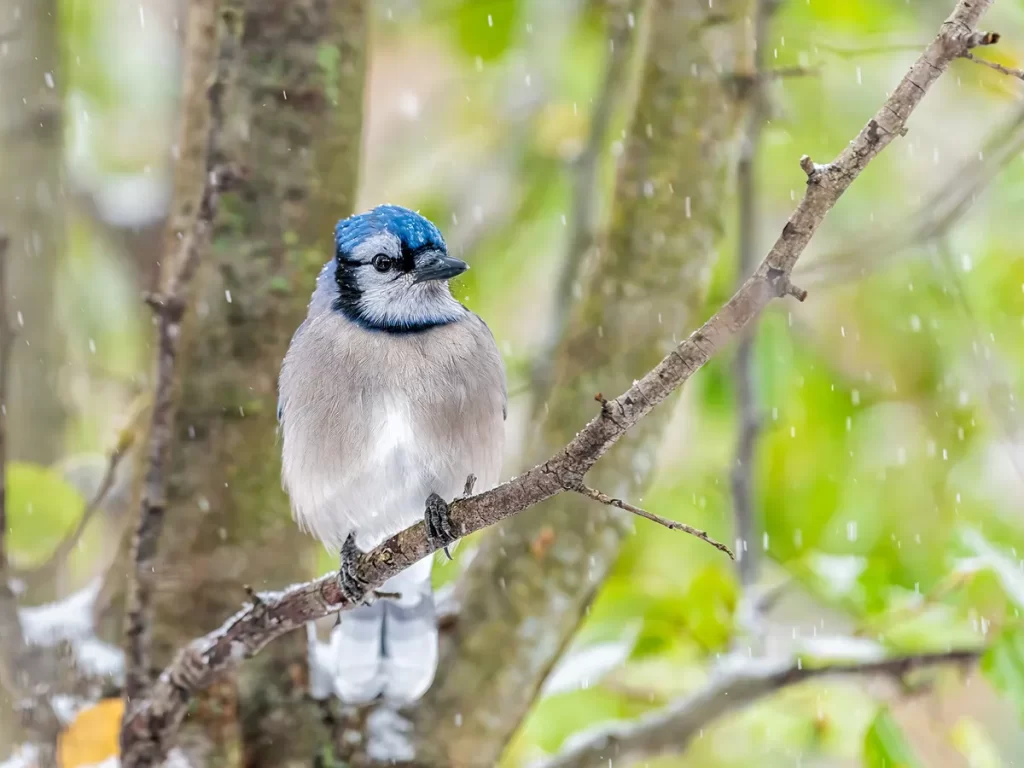Female Blue Jays: A Complete Guide

How can you tell if a blue jay is male or female?
Blue jays are known for their striking blue feathers and white undersides, but distinguishing males from females can be tricky. Unlike some bird species with noticeable sexual dimorphism, male and female blue jays look almost identical. However, subtle differences can sometimes help:
- Size: Males are generally slightly larger than females, but the difference is minimal.
- Behavior: Males are often more aggressive and territorial, especially during mating season.
If you observe blue jays closely during courtship or nesting, you might notice the male exhibiting more pronounced displays of dominance.
What does a female blue jay look like?
A female blue jay looks almost identical to her male counterpart, with vibrant blue plumage, a black "necklace" across the throat, and white-tipped tail feathers. Her crest may appear slightly less pronounced, and her overall body size may be slightly smaller. However, these differences are subtle and not always reliable indicators.
Are female blue jays bigger than males?
No, female blue jays are typically smaller than males. The difference in size, however, is so slight that it’s difficult to notice without close observation. Males may have a slightly broader chest and longer tail feathers, but these variations are not dramatic.
Behavior Differences
Behavioral cues can be more telling than physical traits when distinguishing between male and female blue jays. Females are often:
- Less vocal and aggressive than males, especially during the non-breeding season.
- More focused on nesting and feeding responsibilities during the breeding season.
Males, on the other hand, frequently display more territorial behavior and engage in dramatic courtship displays to attract mates.
Singing and Calls
Blue jays are known for their wide range of calls, from loud squawks to mimicry of hawks. While both males and females vocalize, males are typically more vocal during courtship and territorial disputes. Females use softer calls, especially when communicating with their young or their mate during nesting.
Nesting and Feeding
Female blue jays take the lead in building the nest, though males may assist by gathering materials. The nests are typically located in the branches of tall trees and are made of:
- Twigs
- Grass
- Mud
Once the eggs are laid, the female primarily incubates them, while the male provides food and protection. This division of labor ensures the survival of the offspring.
Courtship
Male blue jays are known for their elaborate courtship rituals, which include:
- Presenting food to the female.
- Engaging in aerial displays.
- Calling loudly to assert their dominance and attract a mate.
These behaviors are essential for forming a strong pair bond.
Can female blue jays raise young alone?
Yes, female blue jays can raise young alone if necessary, though it is uncommon. In most cases, the male remains involved, helping to feed the chicks and protect the nest. However, if the male is absent due to predation or other factors, the female is capable of fulfilling both roles.
Why do geese fly together in groups?
Geese fly in groups to maximize energy efficiency and safety. Flying in a V-formation reduces air resistance, allowing each bird to expend less energy. Additionally, flying in groups provides protection against predators and helps maintain navigational accuracy during migration.
Group Name in Water
When geese are on the water, they are often referred to as a gaggle. This term highlights their tendency to cluster together in a somewhat disorganized but close-knit group.
Why A Gaggle
The term "gaggle" comes from the Old English word "gagelen," which describes the sound geese make. It’s an apt description of their noisy and social nature when gathered on land or water.
How many geese are required for a gaggle?
A gaggle typically consists of three or more geese. However, there is no strict number, as the term broadly applies to any group of geese on the ground or in water.
What is a group of baby geese called?
A group of baby geese is known as a brood. These goslings are typically cared for by both parents, who fiercely protect them from predators. The family stays together until the goslings are old enough to fend for themselves.
When do geese flock together?
Geese flock together primarily during migration seasons in spring and fall. During these times, they gather in large groups to travel long distances, often flying thousands of miles to reach their breeding or wintering grounds.
Why do geese flock together in large groups?
Flocking together in large groups offers several advantages:
- Energy Efficiency: The V-formation helps reduce air resistance for the birds in the back.
- Protection: Larger groups are better equipped to ward off predators.
- Social Structure: Geese are highly social birds, and flocking helps them maintain strong bonds and coordinate movements.
FAQs
How many geese are in a flock?
A flock of geese can range from a few dozen to several hundred, depending on the species and the time of year. During migration, flocks are often larger to enhance efficiency and safety.
What is a pair of geese called?
A pair of geese is often referred to as a mated pair. Geese are monogamous and form strong bonds that can last for many years, sometimes even for life.
Geese Species Specific Terms
Different species of geese have specific terms for their groups:
- Canada Geese: A skein (in flight) or gaggle (on land/water).
- Snow Geese: A flock or wedge (in flight).
- Brant Geese: A company or flock.